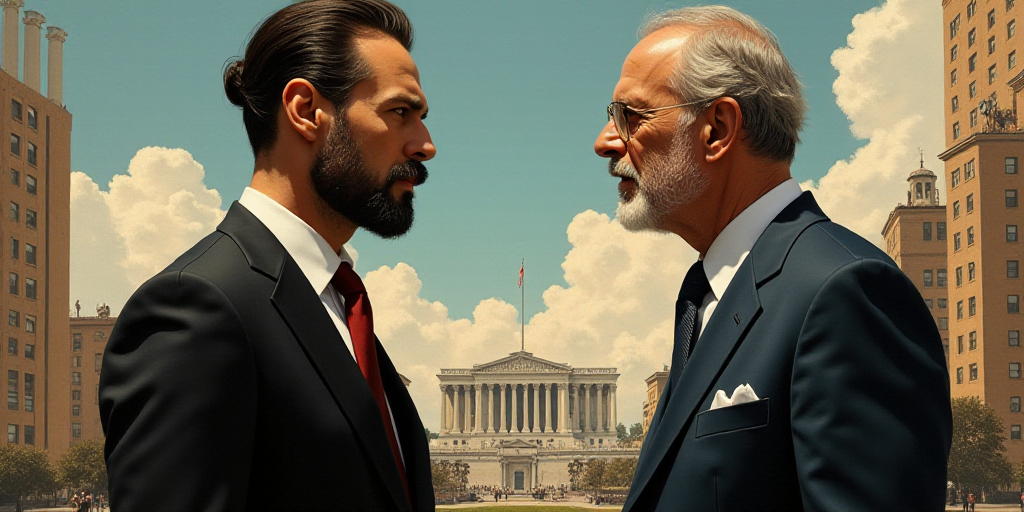Introduction
In late May, Federal Reserve Chair Jerome Powell met with President Donald Trump at the White House, reportedly to discuss economic developments. This meeting comes amidst a recent Supreme Court ruling that could grant Trump the authority to remove independent agency members, including those from the Federal Reserve Board.
Historical Context of Presidential Meetings with Fed Chairs
While presidential meetings with Fed chairs are not unprecedented, they have historically been few and far between. Notable instances include:
- 1965: President Lyndon Johnson met with Fed Chair William McChesney Martin at his Texas ranch, concerned about interest rate hikes affecting economic growth ahead of midterm elections.
- 1970s: President Richard Nixon frequently pressured Fed Chair Arthur Burns to implement expansionary monetary policies.
- 2008: President George W. Bush met with Fed Chair Ben Bernanke multiple times during the global financial crisis to ensure cooperation in preventing a systemic collapse.
- 2019: Powell dined with Trump at the White House.
These meetings generally do not threaten central bank independence, as long as the president demonstrates accountability to the public by outlining the Fed’s priorities and perspective. However, persistent presidential pressure on monetary policy decisions can jeopardize this independence.
Trump’s Criticism of the Fed and Supreme Court Ruling
Trump has repeatedly criticized the Fed’s interest rate decisions. The post-meeting statement from the Fed carefully avoided mentioning “policy expectations.” Meanwhile, the Supreme Court’s May 22 ruling in Trump v. Wilcox granted the president the power to dismiss members of independent government agencies, such as the National Labor Relations Board (NLRB), which oversees labor elections and laws.
The Court’s decision technically suspended a lower court ruling that would have limited the president’s dismissal power, suggesting it was justified due to the significant executive powers exercised by NLRB members. This logic seemingly places the Federal Reserve within Trump’s crosshairs.
However, in a 6-3 decision, the majority explicitly excluded the Federal Reserve from the ruling’s scope. The justices argued that the Fed is a “quasi-private” entity with a unique structure following the historical tradition of the First and Second Banks of the United States.
This argument, while seemingly supportive of Fed independence, is naive, illogical, and historically inaccurate. The First and Second Banks of the United States were private banks that competed with others, offering commercial loans alongside government deposit services. Their private nature was not “quasi.”
In contrast, the Federal Reserve Board comprises seven public officials appointed by the president. The Federal Open Market Committee (FOMC), responsible for interest rate policy, includes these seven board members and five regional Reserve Bank presidents, appointed by bank directors subject to Reserve Board approval. Regional Reserve Banks are closest to being “quasi-private,” as private citizens serve on their boards. However, claiming this applies to the FOMC or the Fed system as a whole is fallacious.
Beyond governance, the Fed’s authority scope differs from that of the First and Second Banks. Those banks lacked statutory authority to regulate banks, a key policy objective of the Fed.
To justify its decision, the majority cited a previous case, Seila Law LLC v. Consumer Financial Protection Bureau, affirming the president’s power to dismiss single-director agency heads. The footnote in this decision mentioned that the Second Bank and the Fed “may claim a special historical status.” However, it provided no legal basis for this assertion or an assessment of its validity.
Exempting the president from checks while arbitrarily excluding the Fed risks undermining its independence. Advocates for an independent Federal Reserve should be concerned.
Key Questions and Answers
- Q: What is the historical context of presidential meetings with Fed chairs?
- Q: How does the recent Supreme Court ruling affect the Federal Reserve?
- Q: What are the implications of excluding the Federal Reserve from the Supreme Court ruling?
A: Historically, presidential meetings with Fed chairs have been rare but not unprecedented. Examples include Lyndon Johnson meeting with William McChesney Martin, Richard Nixon pressuring Arthur Burns, and George W. Bush consulting Ben Bernanke during the 2008 financial crisis.
A: The Supreme Court ruling in Trump v. Wilcox granted the president the power to dismiss members of independent government agencies, including those in the Federal Reserve System. However, the majority explicitly excluded the Fed from this ruling.
A: Excluding the Fed arbitrarily while exempting the president from checks could threaten the Fed’s independence. Advocates for an independent Federal Reserve should be concerned about these developments.






